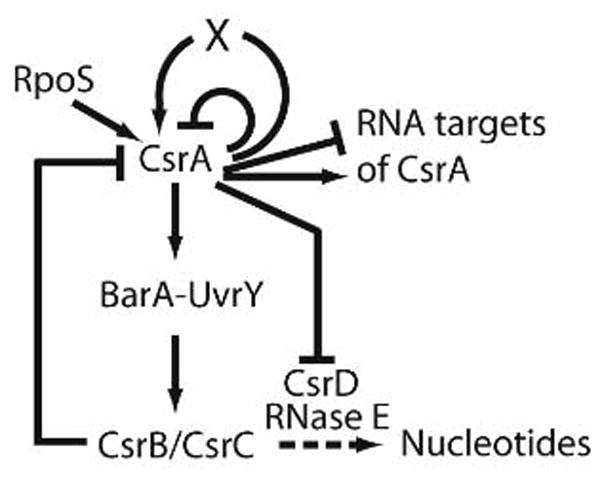Fig. 2.

Autoregulatory loops of the Csr system. CsrA binds to its own mRNA and inhibits translation initiation. It also indirectly activates its own transcription at P3, an RpoS-dependent promoter. CsrA also activates the expression of its two RNA antagonists, CsrB and CsrC, via the BarA-UvrY two-component signal transduction system. Phosphorylated UvrY directly activates transcription of csrB and csrC. The sRNAs CsrB and CsrC contain several CsrA binding sites such that each sRNA is capable of sequestering several CsrA dimers. CsrA modestly represses expression of CsrD, a protein that is required for degradation of CsrB and CsrC by RNase E and PNPase (from Yakhnin et al., 2011).
